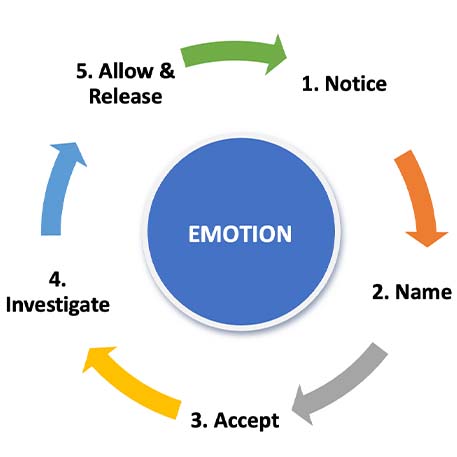Mindfulness of Emotion

When we experience difficult or uncomfortable emotions, it is a natural human reaction to want to suppress of avoid them. However, by becoming mindful of our emotions we can manage and alleviate any discomfort they may cause far more effectively.
To be mindful of our emotions means facing our emotions – not blocking them or running away from them. To face our emotions means to stay with the energetic experience without adding anything to it so that strong feelings can move through us more quickly rather than sticking to us like glue.
If we block or run away from our feelings, they will only come back with more force, in the same way as when you push a beach ball under water it pushes back until you release it and it then shoots out of the water. By facing our feelings head on they subsequently subside far quicker.
- Take three or four deep diaphragmatic breaths. Notice how the breath feels in your throat, as it fills your lungs, and as it stretches your diaphragm. While breathing slowly, notice how you feel inside your body, particularly your stomach and chest. Notice your neck and shoulders and face.
2. Now notice how you feel emotionally. Just keep your attention on the feeling till you have a sense of it. Describe that feeling to yourself. Label it, e.g. I’m feeling anxious.
- Notice the strength of the feeling. Find words to describe the intensity. Notice if the emotion is growing or diminishing. If the emotion were a wave, at what point of the wave are you now— ascending on the leading edge, on the crest, or beginning to slide down the far side!
- Now notice any changes in the feeling. Are there other emotions beginning to weave into the first one? Describe to yourself any new emotions that have appeared. Just keep watching and looking for words to describe the slightest change in the quality or intensity of your feelings.
- As you continue to watch, you may notice a need to block the emotion, to push it away. That’s normal, but try to keep observing your emotions for just a little while longer. Just keep describing to yourself what you feel and noticing any changes.
- Notice what it’s like not to act on your feelings, not to run away or distract yourself, not to blow up or shout. Just be aware of the feeling without action, watching but not doing. Remind yourself that this is a wave that passes, like countless other emotional waves in your life. Waves come and go. There are many times when you’ve felt good. Soon this wave will pass, and you will feel, again, a period of calm. Watch the wave and let it slowly pass.
- If judgment—about yourself or another—arises, notice it and let it go. If you have a judgment about feeling this emotion, notice it and let it go. As best you can, try to accept this feeling. It is just one of life’s struggles.
- Stay aware of your emotions just a little longer. If they are changing, let them change. Describe to yourself what you feel. Keep watching until the emotion either changes or diminishes.
- Finish the exercise with a few minutes of mindful breathing ‐ counting your breaths and focusing on the experience of each breath.
